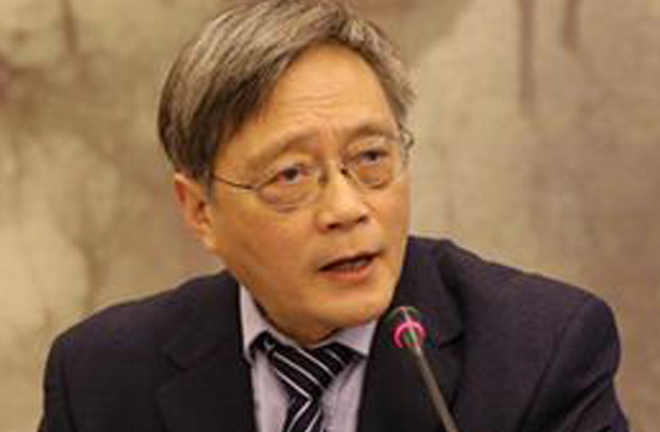FENG SHAOLEI: Building ‘B&R’ requires theoretical innovation
 Great progress has been made since China initiated to jointly build the Belt and Road three years ago, and now the results have exceeded expectations. The initiative has evolved from a concept and broad design to practical implementation of projects. To further advance the construction of the “Belt and Road,” we need not only practical moves but also a solid foundation of in-depth theoretical research. In fact, the initiative is posing topics for various disciplines and research fields.
Great progress has been made since China initiated to jointly build the Belt and Road three years ago, and now the results have exceeded expectations. The initiative has evolved from a concept and broad design to practical implementation of projects. To further advance the construction of the “Belt and Road,” we need not only practical moves but also a solid foundation of in-depth theoretical research. In fact, the initiative is posing topics for various disciplines and research fields.
As a grand project winning global attention, the unprecedented project must progress and improve in the process of implementation. This will be a long process in which there are no ready-made experiences or theories to draw on. Therefore, it needs the support of knowledge and theories from multiple disciplines in international political economy, world civilization and history.
With the deepening of the strategy, we need to seek answers to some fundamental questions. For instance, it is essential to explore ways to improve the global governance system and establish a fairer international cooperation pattern. China is a socialist country, the world’s second-largest economy and the biggest developing country.
We hope to build upon the foundation of existing cooperation with other countries on an equal basis, and we have advantages of a huge domestic market and industrial productivity to advance the cooperation. Another issue worth studying is how to make use of international opportunities to facilitate China’s own development and vice versa.
There are no easy and ready answers to these questions. We should reflect on current theories of international political and economic governance, as well as summarize and refine the experience of building the Belt and Road, and then probe into new development and cooperation path.
In addition to project cooperation, we should also build mechanisms for communication and dialogue among countries. Also, there are other questions we need to answer in implementing the strategy, like how to handle the relationship between the economy, politics and security; how to decide the priority of projects; how to advance the construction of free trade zones; and how to coordinate the initiative with countries’ development strategies as well as existing regional cooperative mechanisms.
Since the start of the 20th century, the establishment and development of the international order has been dominated by Western countries, who branded their civilization and values on it. However, with emerging countries playing an increasingly important role on the international stage, the course of global history is becoming more and more diversified.
Under the guidance of the principles of negotiation, sharing, joint construction and Silk Road Spirit, which includes peace, openness, inclusiveness, mutual learning and mutual benefit, the Belt and Road initiative conforms to the trends of the times while proactively creating new development concepts, promoting the healthy development of economic globalization and respecting diversified civilizations. Support from academia is crucial for achieving these goals.
The new era calls for a multidimensional and disciplinary theoretical framework for Belt and Road building. In recent years, cross-disciplinary research has become the mainstream and exchanges between scholars from different areas are becoming even thorough. All these create a good atmosphere and conditions for theoretical innovation for the strategy. Based on the foundation, a brand new theoretical system that originates from China but belongs to the world will come into being.
Feng Shaolei is a tenured professor at East China Normal University in Shanghai.
